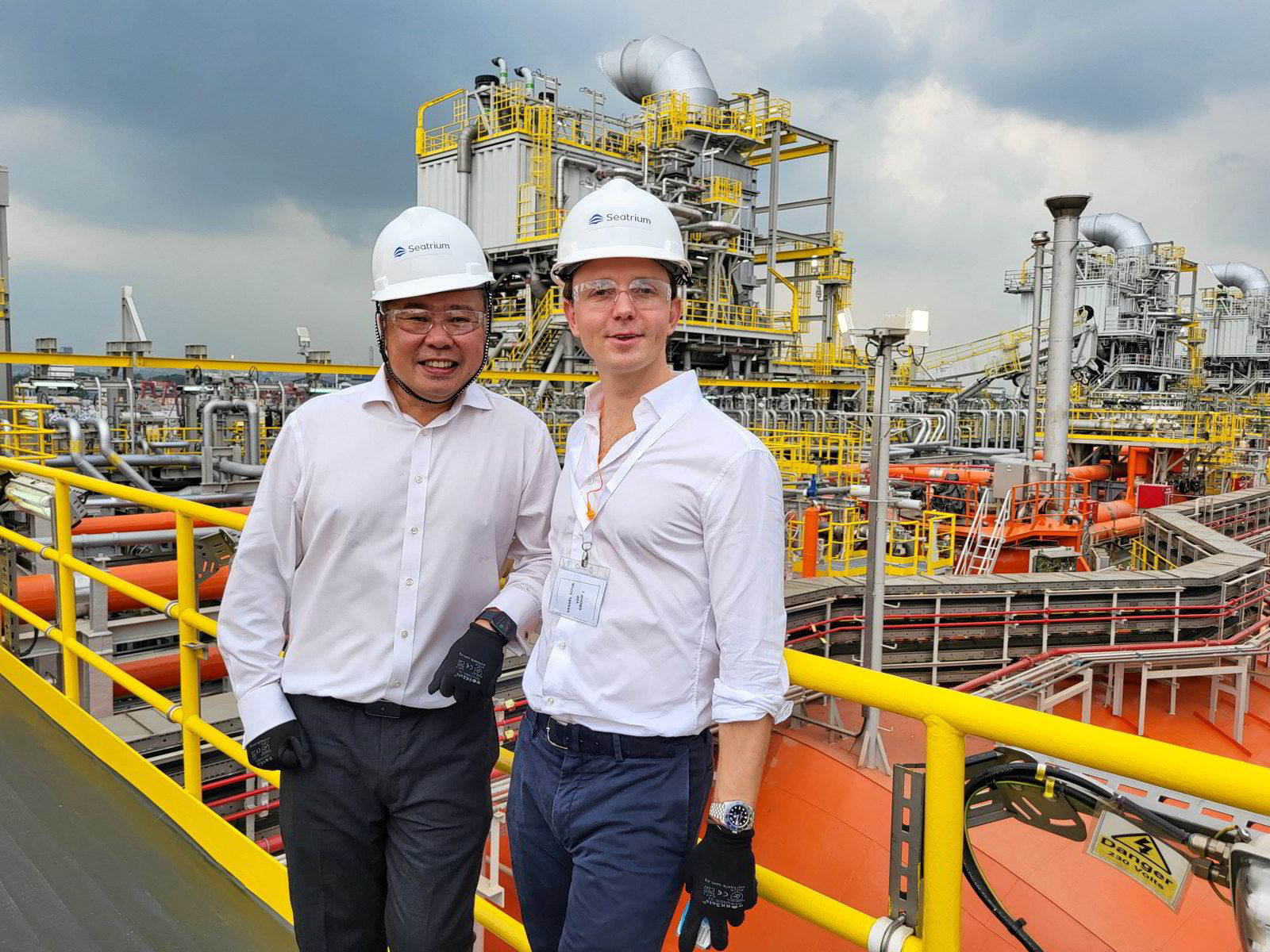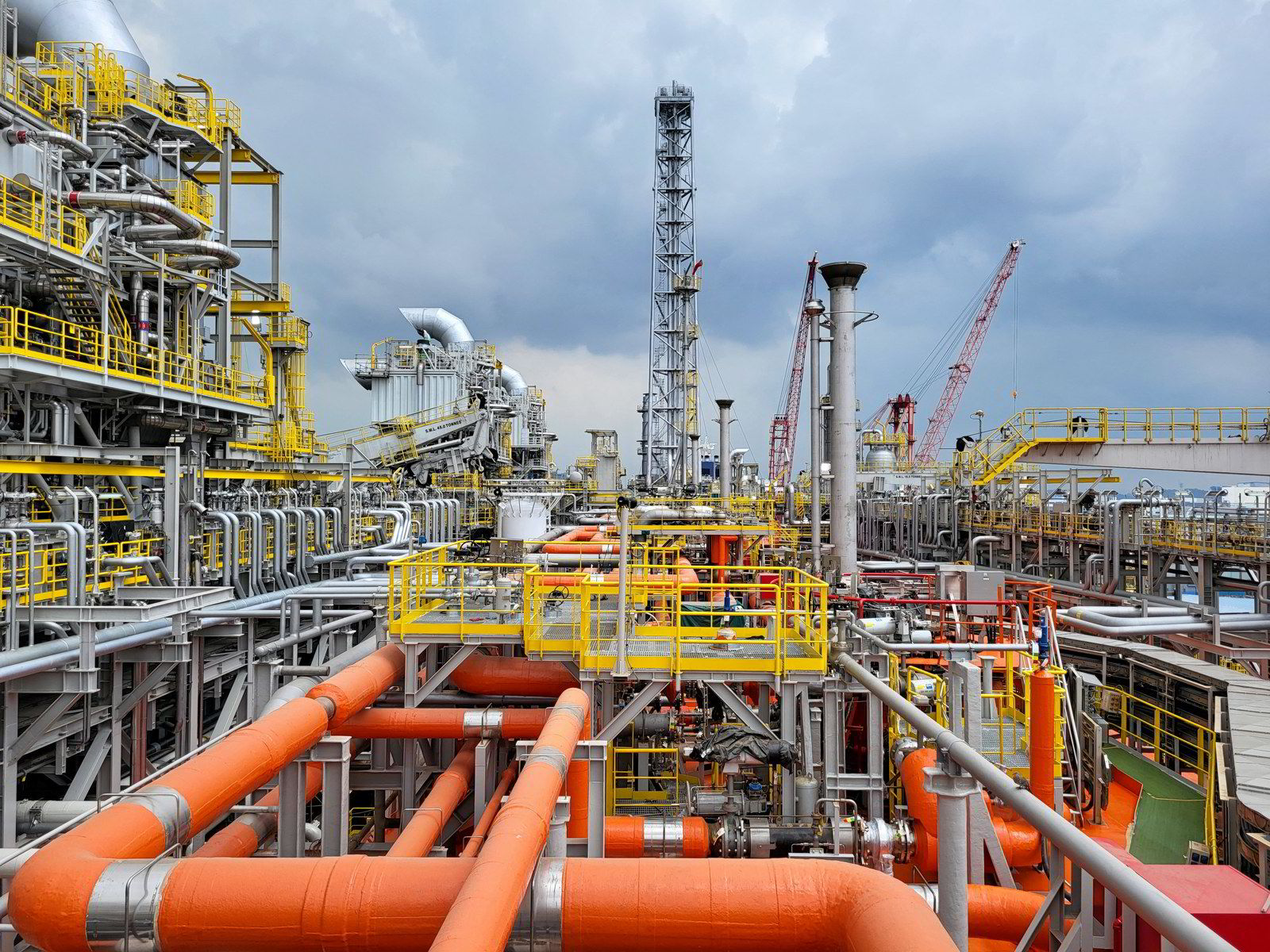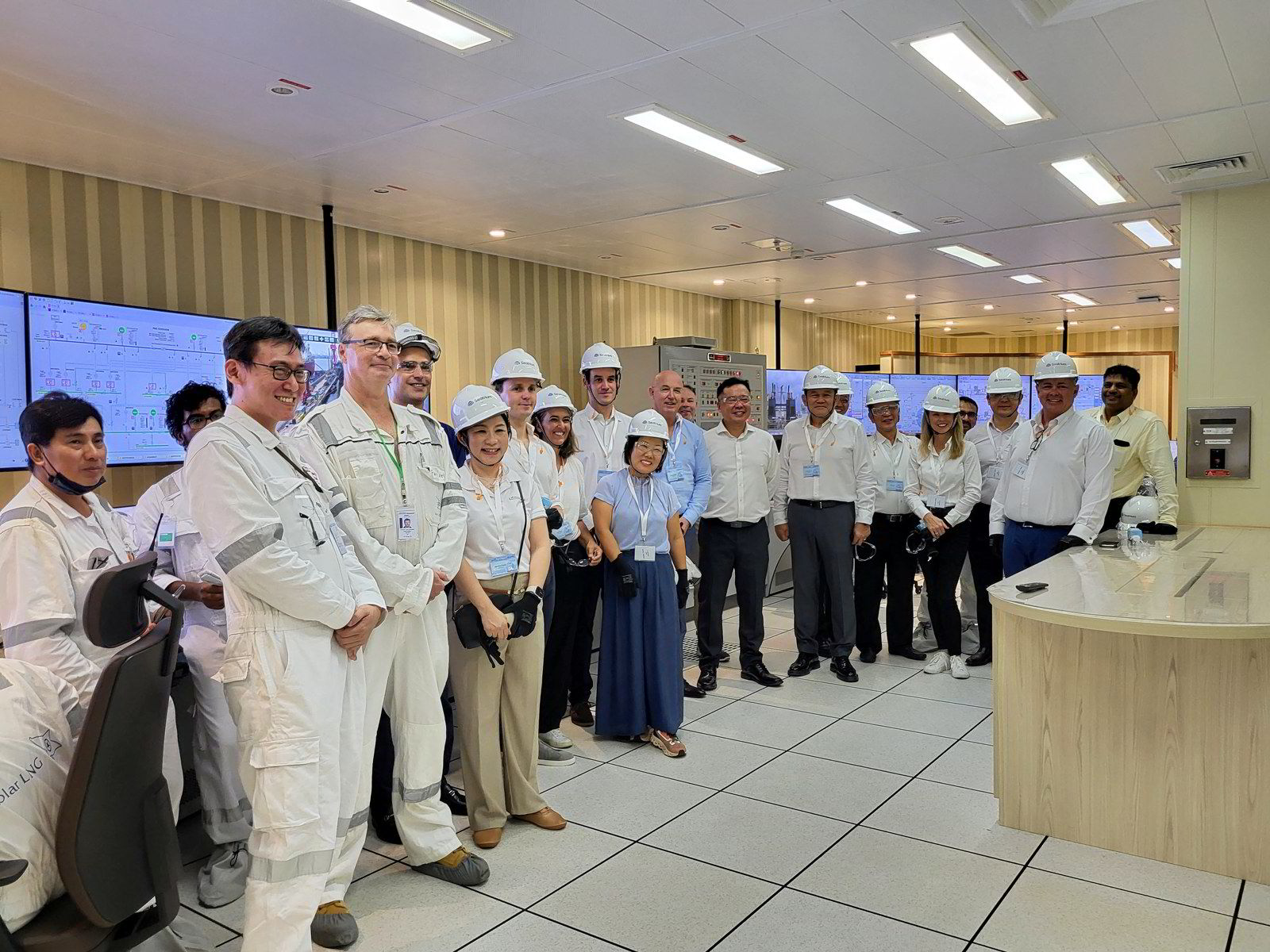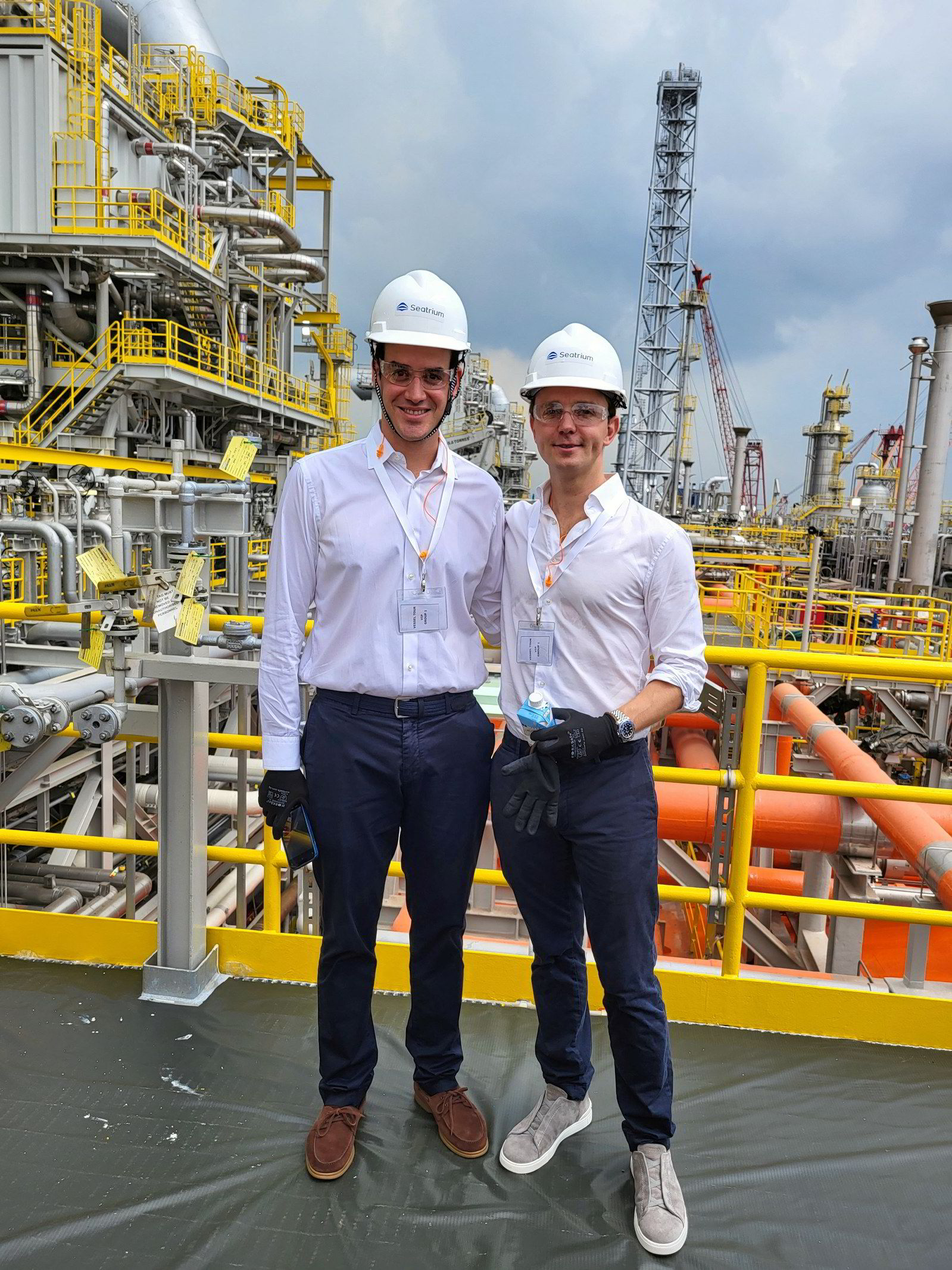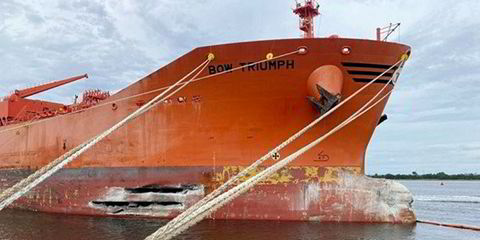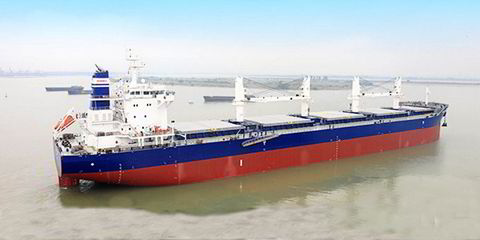Tor Olav Troim-controlled Golar LNG is on the brink of seeing the company’s second conversion of an LNG carrier to a floating production unit depart Singapore for West Africa.
Golar chief executive Karl Fredrik Staubo told TradeWinds that the floating LNG carrier Gimi will shortly leave Seatrium’s shipyard and head to its mega-yard — the former Sembawang Shipyard — where it will go out for sea trials.
The unit will return to the mega-yard for 10 to 14 days and then sail under its own power with a single escort tug to BP’s Greater Tortue Ahmeyim Project on the border of Mauritania and Senegal.
The total voyage time is about 60 days, with the unit scheduled to stop in Mauritius for refuelling.
Staubo said the FLNG Gimi will then continue around the Cape of Good Hope and will send a “notice to connect” to BP once on the project is boundary.
It then moors alongside a 1.2-km breakwater, which sits parallel to a jetty.
“Golar is ready for operation this year,” Staubo said.
The Golar CEO was speaking at a tour of the FLNG unit organised to coincide with the huge Gastech 2023 meeting in Singapore this week.
Staubo peppered his presentation with a couple of light-hearted sales pitches, telling any potential charterers in the room that Golar hoped they liked what they saw and was available to talk to them later.
“It is not without challenges to build a vessel like this,” explaining that work areas had to be segregated during the pandemic.
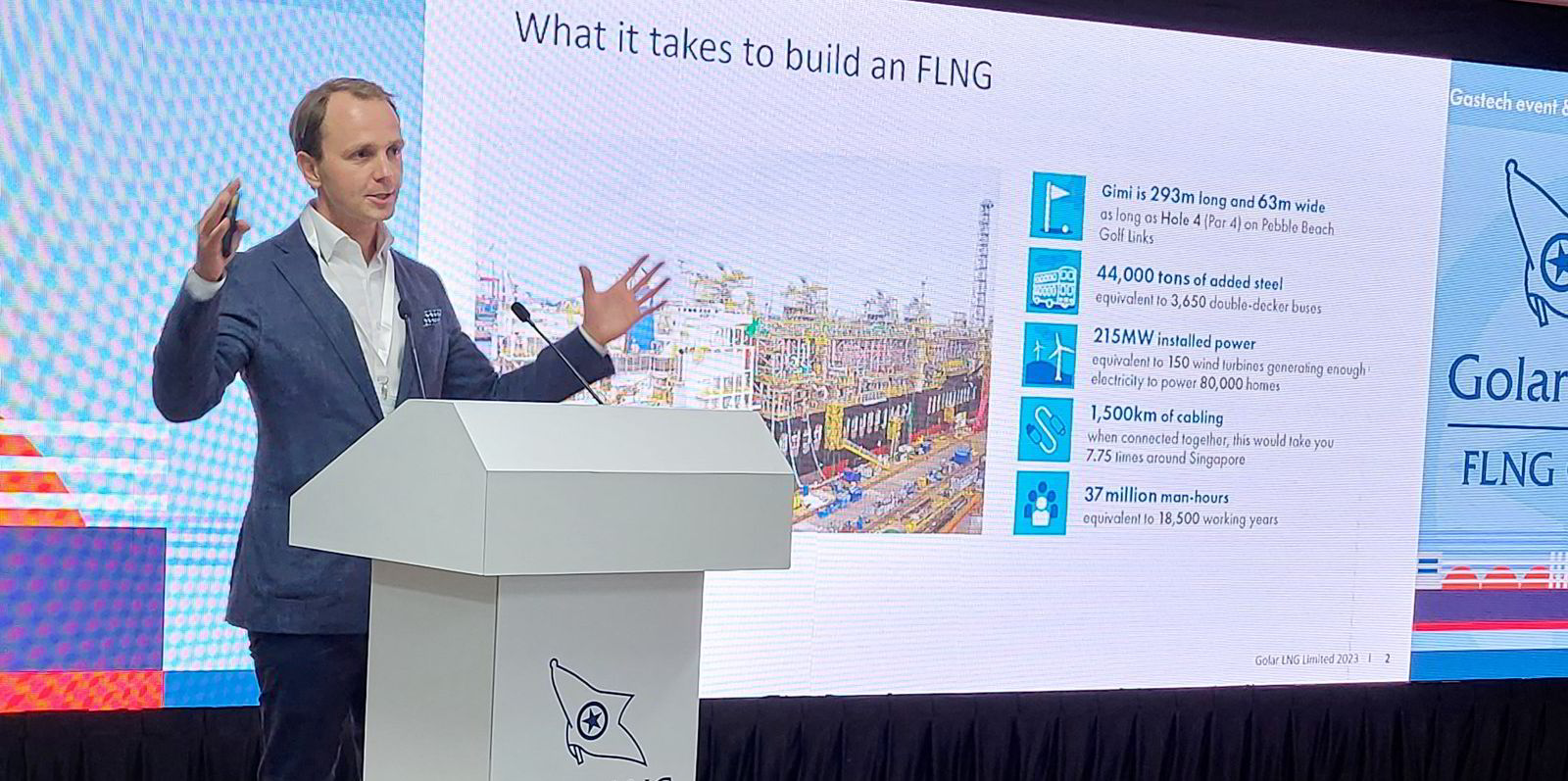
Seatrium CEO Chris Ong described the completion of the FLNG Gimi as “a big milestone” for the yard and Golar.
Ong, who pointed out that Seatrium will be the only yard to have delivered two LNG carrier-to-FLNG conversions, said the conversion of the 47-year-old LNG carrier was a quick way to market and resulted in the reduction of 30% in greenhouse gas emissions over an FLNG unit newbuilding.
Staubo drilled down into how the FLNG unit operates for his mixed and excitable audience.
He said feed gas, which is piped in to just under the jetty from a floating production storage and offloading unit located 115-km offshore, enters through the bow area of the vessel.
It is pre-treated in two amine towers with the first removing the CO2 and acid gas and the second taking out the mercury.
The high flare tower in the bow is only for use in emergencies.
- Length: 293 metres
- Width: 65 metres
- Nameplate Liquefaction capacity: 2.7 mtpa
- LNG containment: 125,000 cbm in six tanks
- Installed power: 215 MW, equivalent to 150 wind turbines generating enough electricity to power 80,000 homes
- Offloading rate: Up to 10,000 cbm per hour
- Designed to operate nearshore in 30-metre water depth
- Designed to stay on site for 20 years without dry-docking
The pre-treated gas is then sent to the four liquefaction units on the vessel’s port side, where the gas is liquefied.
It is then sent to the LNG expander before entering one of the five Moss-type cargo tanks.
Once the ship is filled, it is offloaded through marine hoses to the hub, which then offloads via marine loading arms into visiting LNG carriers that ship the product to end-users.
Staubo said Golar has been through a big change since starting the FLNG Gimi project in early 2019, diverting some $7bn of assets by selling its floating storage and regasification units, power plant interests and LNG carriers.
He said the company is now the world’s only “focused FLNG player” mentioning its first FLNG unit Hilli, which is stationed off Cameroon and expected to produce its 100th cargo this year. He said this is the best-performing FLNG unit in the world.
The Golar CEO was quick to plug the company’s three designs. Both the Hilli and Gimi are Mark I designs, but the company is also marketing a 3.5-million tonne per annum LNG floater alongside another larger five-mtpa vessel.
“So for those of you still interested in chartering an FLNG [unit] that’s the menu,” he said.
- 44,000 tonnes of new steel has been added to the vessel — the equivalent of adding 3,650 double-decker buses
- 1,500 km of cabling has been installed, which when connected could circle Singapore 7.75 times
- 8,600 square metres of new deck space added
- 37 million man hours were clocked up for the conversion — equivalent to 18,500 working years — with no lost-time incidents
